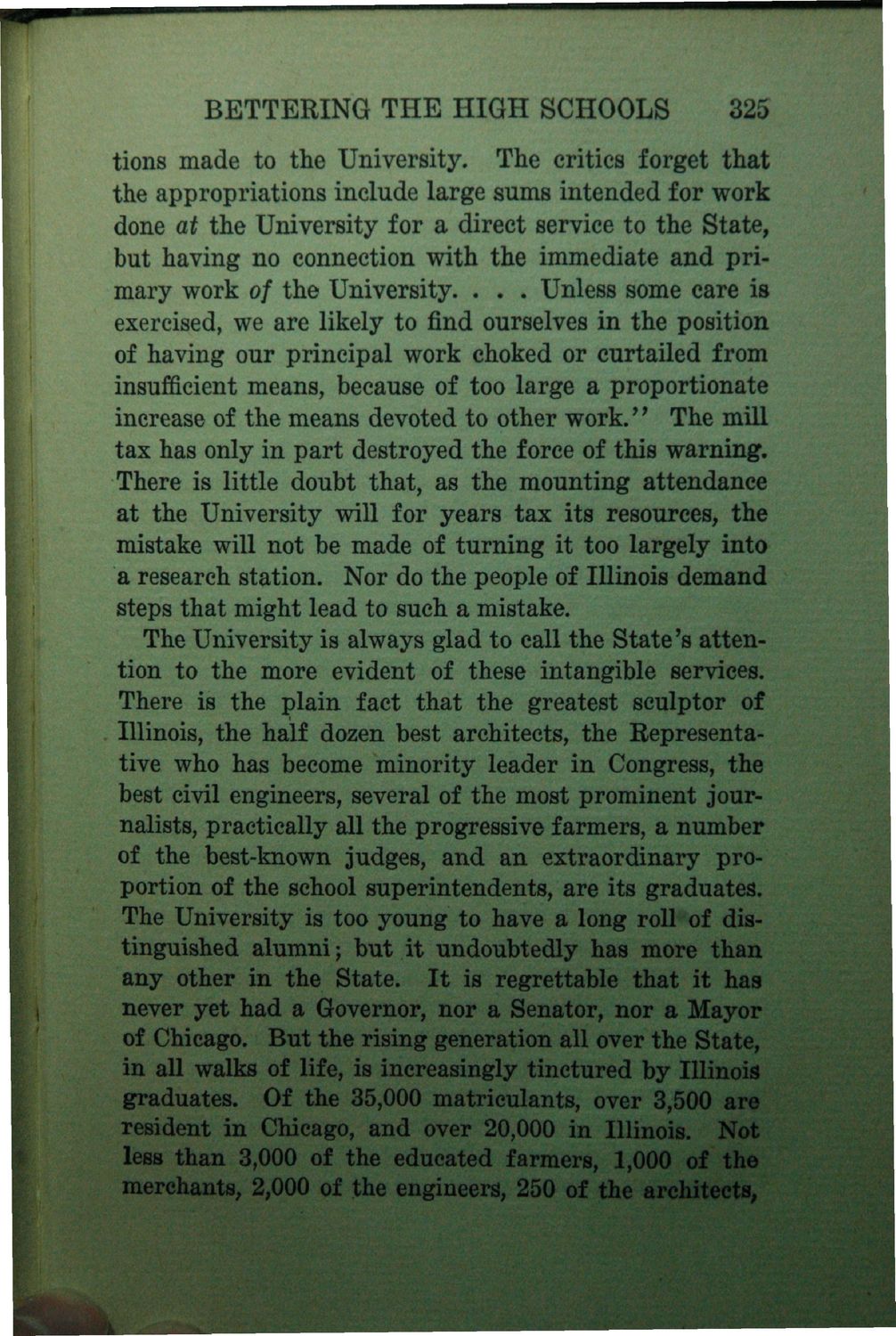| |
| |
Caption: Book - History of the University (Nevins)
This is a reduced-resolution page image for fast online browsing.

EXTRACTED TEXT FROM PAGE:
BETTERING THE HIGH SCHOOLS 325 tions made to the University. The critics forget that the appropriations include large sums intended for work done at the University for a direct service to the State, but having no connection with the immediate and primary work of the University. . . . Unless some care is exercised, we are likely to find ourselves in the position of having our principal work choked or curtailed from insufficient means, because of too large a proportionate increase of the means devoted to other work." The mill tax has only in part destroyed the force of this warning. There is little doubt that, as the mounting attendance at the University will for years tax its resources, the mistake will not be made of turning it too largely into a research station. Nor do the people of Illinois demand steps that might lead to such a mistake. The University is always glad to call the State's attention to the more evident of these intangible services. There is the plain fact that the greatest sculptor of Illinois, the half dozen best architects, the Representative who has become minority leader in Congress, the best civil engineers, several of the most prominent journalists, practically all the progressive farmers, a number of the best-known judges, and an extraordinary proportion of the school superintendents, are its graduates. The University is too young to have a long roll**of distinguished alumni; but it undoubtedly has more than any other in the State. It is regrettable that it has never yet had a Governor, nor a Senator, nor a Mayor of Chicago. But the rising generation all over the State, in all walks of life, is increasingly tinctured by Illinois graduates. Of the 35,000 matriculants, over 3,500 are resident in Chicago, and over 20,000 in Illinois. Not less than 3,000 of the educated farmers, 1,000 of the merchants, 2,000 of the engineers, 250 of the architects,
| |